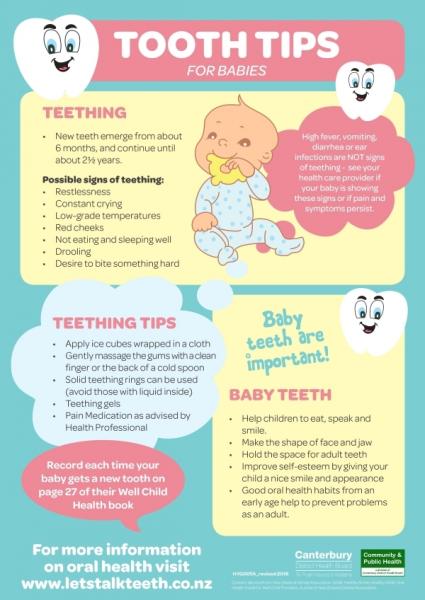
Teething: A Comprehensive Guide for Parents
Teething is a natural process that all babies go through, but it can be a challenging time for both babies and parents. Understanding the signs and symptoms of teething, as well as knowing how to provide comfort and relief, can help make this transition smoother.
Signs and Symptoms of Teething
- Increased drooling
- Chewing on objects
- Irritability and fussiness
- Difficulty sleeping
- Red, swollen gums
- Mild fever
- Diarrhea (in some cases)
Teething Timeline
The timing of teething varies from baby to baby, but the general timeline is as follows:
- 2-4 months: Lower front teeth (central incisors)
- 4-7 months: Upper front teeth (lateral incisors)
- 8-10 months: Lower side teeth (canines)
- 10-12 months: Upper side teeth (first molars)
- 12-18 months: Lower back teeth (second molars)
- 20-30 months: Upper back teeth (second molars)
How to Provide Comfort and Relief
- Gum massage: Gently massage your baby’s gums with a clean finger or a teething ring. This can help soothe the discomfort and promote circulation.
- Cold objects: Offer your baby cold objects to chew on, such as a teething ring or a frozen washcloth. The cold can help numb the pain and reduce inflammation.
- Teething gels: Over-the-counter teething gels containing benzocaine or lidocaine can provide temporary pain relief. However, it’s important to use these gels sparingly and follow the instructions carefully.
- Pain relievers: If your baby is experiencing significant pain, you can give them a pain reliever such as acetaminophen or ibuprofen. Always consult with your healthcare provider before giving your baby any medication.
- Distraction: Try to distract your baby from the discomfort by playing with them, reading to them, or taking them for a walk.
Home Remedies for Teething
- Chamomile tea: Chamomile has calming and anti-inflammatory properties that can help soothe teething pain. Steep a chamomile tea bag in hot water and let it cool before giving it to your baby.
- Ginger: Ginger is another natural pain reliever that can help reduce inflammation. You can give your baby ginger tea or a ginger compress.
- Clove oil: Clove oil has antibacterial and analgesic properties that can help numb the pain of teething. Dilute a few drops of clove oil in a carrier oil, such as coconut oil, and apply it to your baby’s gums.
When to Call the Doctor
In most cases, teething is a normal process that doesn’t require medical attention. However, there are some situations where you should call your doctor:
- If your baby has a fever over 101 degrees Fahrenheit
- If your baby is vomiting or has diarrhea
- If your baby is refusing to eat or drink
- If your baby’s gums are bleeding or swollen
- If your baby’s teething pain is severe and doesn’t respond to home remedies
Tips for Preventing Teething Problems
- Keep your baby’s mouth clean by wiping their gums with a damp cloth.
- Avoid giving your baby sugary foods and drinks, as these can contribute to tooth decay.
- Take your baby to the dentist for regular checkups, starting at around 6 months of age.
Conclusion
Teething can be a challenging time for babies and parents, but understanding the signs and symptoms and knowing how to provide comfort and relief can help make this transition smoother. By following these tips, you can help your baby through this natural process and ensure their overall health and well-being.
